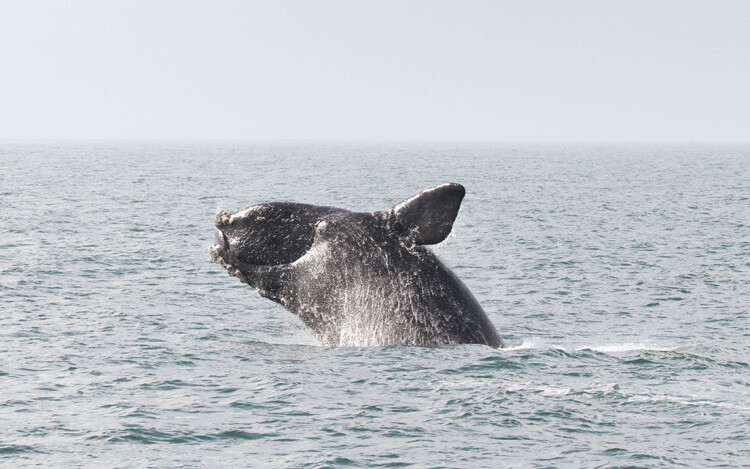Today, NOAA announced its plans for the historic $82 million to conserve and recover endangered North Atlantic right whales.
NOAA Fisheries received this funding under the Inflation Reduction Act, allowing the agency to prioritize several critical areas focused on tackling the impacts of climate change on marine resources, including endangered North Atlantic right whales.
North Atlantic right whales are approaching extinction with a population of fewer than 350, including less than 70 reproductively active females remaining.
With the IRA funding, NOAA states "that we have a once-in-a-lifetime opportunity to address the North Atlantic right whale crisis with new technologies and approaches." Specifically, they will invest the IRA funds into four significant activities during the next three fiscal years.
Monitoring and Modeling: $35.8 million will be invested in monitoring and modeling efforts.
- A large portion of this funding, $17.2 million, will go toward furthering passive acoustic monitoring along the U.S. East Coast.
- $3.5 million will go toward a satellite tagging monitoring program, in addition to $5.6 million for high-resolution satellite artificial intelligence.
- $5.2 million will be used for modeling advancements.
Vessel Strike Risk Reduction: $20.1 million will be invested toward vessel strike risk reduction efforts.
- The majority of vessel strike risk reduction funds, $16.7 million, will go toward whale detection and avoidance technology development. This includes the upcoming North Atlantic Right Whale Vessel Strike Risk Reduction Technology workshop in early 2024.
- Much of the funds allocated for on-demand fishing will be used for staff support. We also expect to spend $7.4 million on the Atlantic States Marine Fisheries Commission vessel reimbursement for over 50 vessels and $2 million on training for use of on-demand systems.
- Funding invested in enforcement efforts will support new equipment, such as Doppler units, radar plotting aids, and marine monitor shore-based units, in addition to contracts for operations.
For more information and updates, visit the NOAA Fisheries website.







